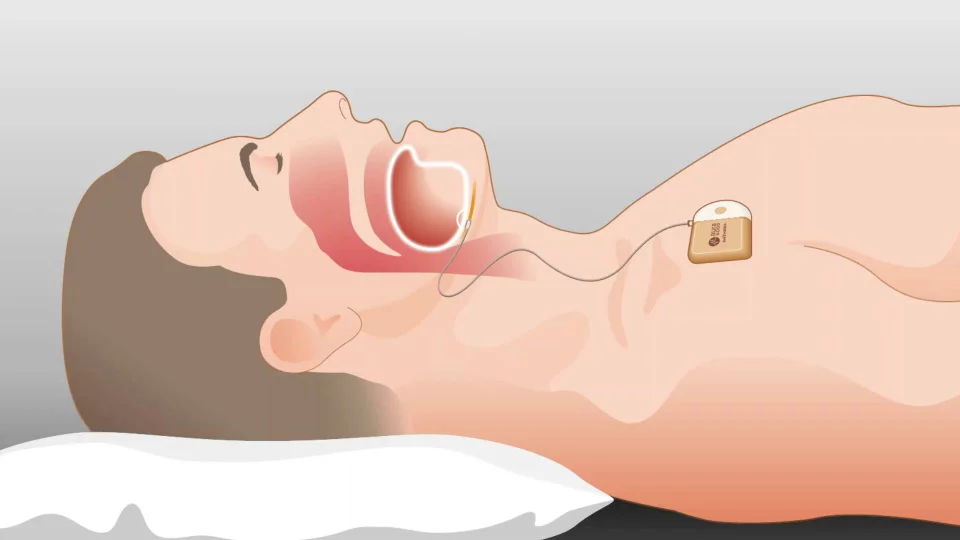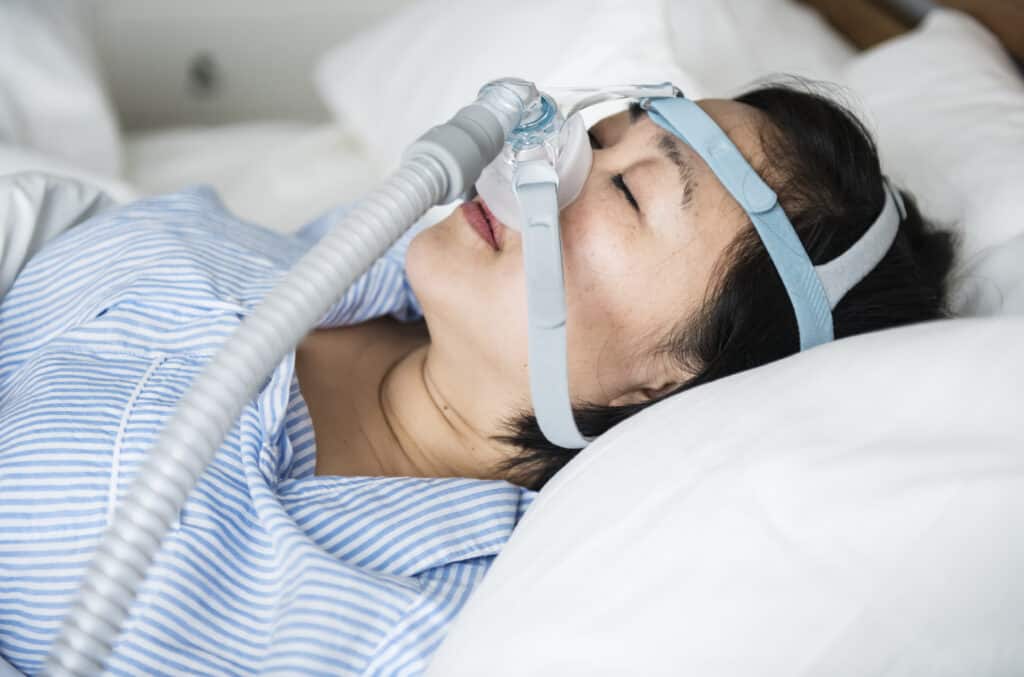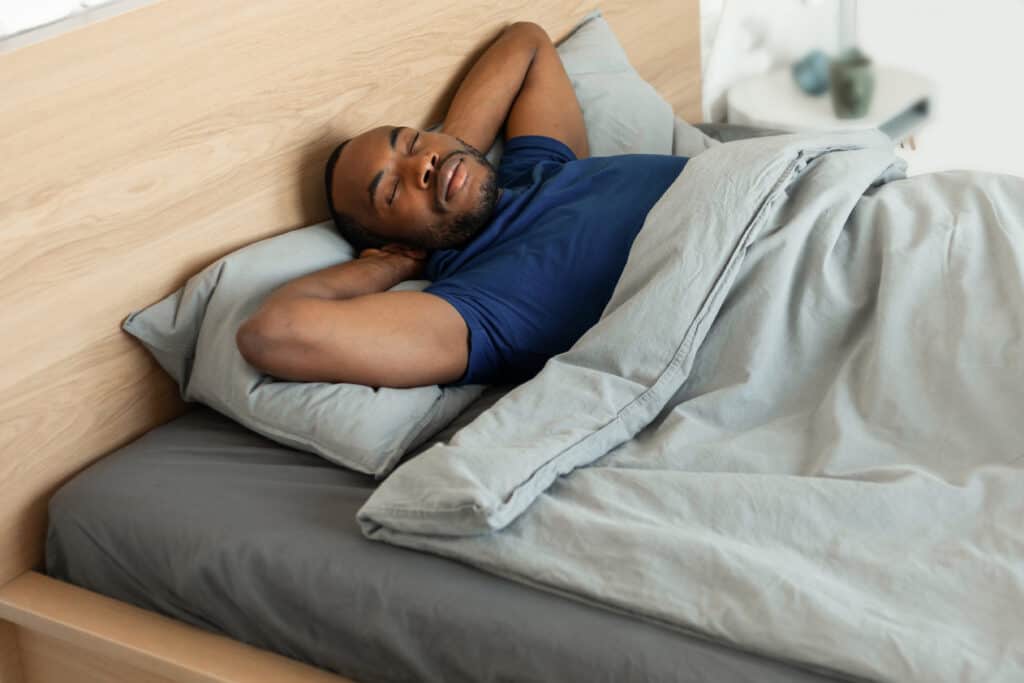Sleep apnea is a common yet potentially serious sleep disorder affecting millions worldwide. If you’re among those who suffer from this condition, finding a solution that works for you can be life-changing. One innovative option you may consider is the Inspire Sleep Apnea Treatment, an FDA-approved surgical implant designed to treat obstructive sleep apnea from within your body.
The Inspire system offers an alternative to traditional continuous positive airway pressure (CPAP) therapy. It works by sending signals to the nerve that controls your tongue and upper airway, tightening them and keeping your airway open during sleep. This unique technology has the potential to change the lives of countless individuals struggling with sleep apnea. As you explore treatment options, keep Inspire in mind as a potential game-changer for your sleep quality and overall health.
What Is Inspire for Sleep Apnea
Inspire is a revolutionary sleep apnea treatment designed to help people who suffer from obstructive sleep apnea (OSA). It addresses the root cause of OSA by stimulating the upper airway muscles, ensuring a clear and open pathway for breathing during sleep.
The unique aspect of this therapy is that it uses an implantable device placed under your skin on your chest. This FDA-approved device connects to the nerve that controls your tongue and upper airway muscles. It sends a gentle signal to tighten these muscles while you sleep, improving airflow and reducing sleep apnea symptoms.
To get started with Inspire treatment, you’ll need to undergo a minor surgical procedure, but don’t worry – it is usually an outpatient procedure, and you can often go home the same day. After the device is implanted, you can control it with a handheld remote to activate it each night before sleep.
Remember that Inspire is specifically designed for people with obstructive sleep apnea, which means it might not be suitable for everyone. Always consult with your doctor to determine if this therapy is the best option for you and how it might fit into your overall sleep apnea treatment plan.
With Inspire, you can experience a comfortable, effective, and convenient way to manage your sleep apnea symptoms, giving you the chance to enjoy a peaceful night’s sleep and an improved quality of life.
Understanding Sleep Apnea
Sleep apnea is a sleep disorder that involves pauses in breathing or shallow breaths during sleep. These pauses can last for a few seconds to minutes and are generally followed by loud snoring, disrupted sleep, and potential health complications. Sleep apnea can be classified into three main types, which are detailed below.
Obstructive Sleep Apnea (OSA)
Obstructive Sleep Apnea (OSA) is the most common form of sleep apnea. In OSA, the airway becomes partially or completely blocked during sleep, usually due to the relaxation of the throat muscles. This obstruction causes the pauses in breathing and loud snoring associated with sleep apnea. If you have OSA, you may experience daytime sleepiness, sudden awakenings with a choking or gasping sensation, and difficulty staying asleep. OSA can also increase the risk of high blood pressure, heart problems, and type 2 diabetes.
Central Sleep Apnea (CSA)
Central Sleep Apnea (CSA) is less common and occurs when the brain fails to send proper signals to the muscles that control breathing. This lack of signaling results in the absence of respiratory effort during sleep, leading to similar breathing pauses as OSA. However, in CSA, the issue isn’t a physical blockage but rather a communication problem between the brain and the breathing muscles. Symptoms of CSA can include difficulty staying asleep, shortness of breath during sleep, and daytime sleepiness.
Mixed Sleep Apnea
Mixed Sleep Apnea, also known as complex sleep apnea, is a combination of both obstructive and central sleep apnea. In this form of sleep apnea, you may experience episodes of OSA followed by episodes of CSA throughout the night, making it even more challenging to maintain a restful sleep. Combining features of both types, people with Mixed Sleep Apnea may suffer from snoring, choking during sleep, poor quality sleep, and excessive daytime sleepiness.
If you suspect you have sleep apnea, it is essential to consult a healthcare professional for proper diagnosis and treatment.
How Inspire Therapy Works
Upper Airway Stimulation
Inspire therapy is a treatment for sleep apnea that uses upper airway stimulation to prevent the obstruction of the airway during sleep. The device sends a signal to the hypoglossal nerve, which controls your tongue and upper airway muscles. By tightening these muscles, Inspire improves airflow and reduces obstructive sleep apnea symptoms.
Implantable Components
The Inspire system consists of three main components:
- Sensing lead: This monitors your breathing patterns during sleep and detects when to provide stimulation.
- Stimulator: This is the implanted device that generates the electrical signals sent to the hypoglossal nerve to adjust the position of your tongue and control upper airway muscles.
- Stimulation lead: This connects the stimulator to the hypoglossal nerve, delivering the necessary stimulation to keep the airway open.
The Inspire device is implanted during a minor surgical procedure. You can usually go home the same day.
Remote Control
A remote control is also provided, allowing you to adjust the Inspire therapy settings and turn the device on or off as needed. This means that you have control over when the therapy is active, ensuring a comfortable and effective sleep apnea treatment experience.
By following your doctor’s advice and using the Inspire therapy as prescribed, you can greatly improve your overall quality of sleep and reduce the negative effects of sleep apnea on your life.
The Inspire Implant Procedure
Outpatient Procedure
The Inspire implant for sleep apnea is an outpatient procedure, which means you can usually go home the same day after the surgery. This treatment is designed for individuals diagnosed with obstructive sleep apnea (OSA) who have not found relief through other treatments, such as continuous positive airway pressure (CPAP).
Surgical Procedure
During the surgical procedure, a small device is implanted under the skin on your chest. The device sends a signal to the nerve that controls your tongue and upper airway, tightening them while you sleep. This process improves airflow and reduces OSA symptoms.
Here is a brief overview of the procedure:
- You’ll undergo general anesthesia before the surgery begins.
- The surgeon makes small incisions to insert the components under your skin.
- The components are connected, and the device is secured in place.
- The device is tested to ensure proper functioning before the incisions are closed.
Recovery Process
After the procedure, your recovery time may vary depending on your individual healing process. You can expect some initial discomfort around the incision sites, which can be managed with pain medication as needed. Follow your doctor’s instructions for caring for your incisions and monitor for any signs of infection.
During your recovery, be aware of the following:
- Swelling and bruising may occur around the incisions; gradually reducing over time.
- Avoid strenuous activities and follow exercise restrictions as advised by your doctor.
- You will have a follow-up appointment to ensure the device is functioning correctly.
In conclusion, the Inspire implant procedure is a minimally invasive outpatient surgery that aims to provide relief from obstructive sleep apnea. By following your doctor’s instructions and allowing for proper recovery, you can improve your sleep quality and minimize OSA symptoms.
Clinical Studies and FDA Approval
Clinical studies and trials are crucial for determining the safety and effectiveness of new treatments, such as Inspire for sleep apnea. The Inspire Sleep Apnea Innovation is the only internal neurostimulation treatment for obstructive sleep apnea (OSA) that has received FDA approval. The Food and Drug Administration (FDA) initially approved this treatment in 2014 for people aged 22 and up. However, in 2020, the FDA expanded the eligible age range to include individuals 18 years or older who meet the required criteria.
Before Inspire received its FDA approval, it underwent thorough clinical studies and trials to determine its effectiveness in treating patients with moderate to severe OSA who are unable to use continuous positive airway pressure (CPAP) therapy. As a fully implanted neurostimulation device, Inspire therapy is designed to sense when you stop breathing during sleep and provide gentle stimulation to keep your airway open.
In March 2023, the FDA approved Inspire therapy for pediatric patients with Down Syndrome, offering a new treatment option for this group of patients. This approval demonstrates that the Inspire therapy, as the first and only FDA-approved neurostimulation technology, continues to be recognized for its ability to provide safe and effective treatment for moderate to severe OSA in various patient populations.
Throughout the approval process, the FDA carefully reviews clinical trial data to ensure that the treatment is both safe and effective for its intended use. With the Inspire therapy’s ongoing success in research and clinical applications, you can be confident in its ability to address moderate to severe OSA for those who are not candidates for, or cannot tolerate, CPAP therapy. Remember to consult a sleep specialist or your healthcare provider to discuss whether Inspire therapy is the right treatment option for your specific needs.
Benefits and Relief of Inspire Therapy
Reduced Apnea-Hypopnea Index
Inspire therapy can greatly reduce your Apnea-Hypopnea Index (AHI), which measures the severity of sleep apnea by accounting for the number of partial or complete disruptions in breathing each hour during sleep. A lower AHI means fewer disruptions and a more restful night’s sleep.
- Helps in reducing AHI to a significant extent
- Stabilizes the airway to prevent disruptions in breathing during sleep
Improved Sleep Quality
The Inspire therapy works by stimulating the nerve that controls your tongue and upper airway, tightening them while you sleep. This improvement in airflow reduces obstructive sleep apnea, which in turn enhances your sleep quality.
Some benefits of improved sleep quality are:
- Longer durations of uninterrupted sleep
- Enhanced feelings of restfulness upon waking up in the morning
- Better overall physical and mental health
Decreased Daytime Sleepiness
By effectively reducing the number of disruptions in your breathing during sleep, Inspire therapy can also decrease your daytime sleepiness. When you wake up feeling more refreshed each day, it can lead to:
- Increased alertness
- Better cognitive function
- Enhanced mood and wellbeing
- Improved productivity
With Inspire therapy, you can experience notable improvements in your sleep apnea symptoms and overall wellbeing.
Side Effects and Risks
As you consider Inspire Sleep Apnea Treatment, it’s essential to be aware of the potential side effects and risks associated with the therapy. Some common side effects include tongue abrasion, dry mouth, and discomfort from the nerve stimulator. In rare cases, patients may experience muscle atrophy and partial tongue paralysis. However, your doctor can fine-tune your device’s settings to help alleviate these side effects 1.
Besides the more common side effects, there are other risks reported with the Inspire device as well. You should inform your surgeon if you experience any of the following symptoms after your surgery recovery:
- Allergic reaction or rejection of the device’s materials
- Bleeding
- Coughing
- Damage to the nerve
- Difficulty swallowing or talking
- Dry mouth
- Headaches
- Infection
- Insomnia 2
More serious but rare risks to be aware of include allergic reactions, nerve trauma or damage, and damage to blood vessels around the implant site 3. It’s crucial to communicate with your healthcare provider about any concerns or symptoms you may be experiencing during your treatment. They can help address any issues and work with you to optimize your comfort and the effectiveness of the Inspire Sleep Apnea Treatment.
In summary, while there are risks and side effects associated with Inspire Sleep Apnea Treatment, many of them are manageable through communication with your healthcare provider and appropriate adjustments to the device settings. As you explore this treatment option, make sure to stay informed, ask relevant questions, and maintain an open dialogue with your doctor.
Footnotes
- https://www.sleepfoundation.org/sleep-apnea/what-is-inspire-sleep-apnea-treatment ↩
- https://www.verywellhealth.com/inspire-for-sleep-apnea-3015288 ↩
- https://www.cnet.com/health/medical/what-is-inspire-for-sleep-apnea-what-to-know-about-the-new-treatment/ ↩
Comparing Inspire Therapy to CPAP
Continuous Positive Airway Pressure
Continuous Positive Airway Pressure (CPAP) is a widely used treatment for obstructive sleep apnea. In this therapy, you wear a mask connected to a CPAP machine, which delivers pressurized air to your airways, keeping them open while you sleep. The constant flow of air helps prevent your airways from collapsing, allowing you to breathe continuously throughout the night.
Effectiveness of CPAP
CPAP therapy has been proven to be effective in managing sleep apnea symptoms. Regular use of CPAP can lead to:
- Improved sleep quality
- Decreased daytime sleepiness
- Lower risk of heart-related problems
Drawbacks of CPAP Therapy
Despite the effectiveness of CPAP therapy, some people find it difficult to tolerate for various reasons:
- Discomfort from wearing a mask
- Dryness in the nose and mouth
- Difficulty falling asleep due to air pressure
- Noise from the CPAP machine
On the other hand, Inspire Sleep Apnea Treatment is an innovative, FDA-approved implantable device designed for those with obstructive sleep apnea. Unlike CPAP, Inspire doesn’t require wearing a mask or using a machine. Instead, the implanted device sends a signal to the nerve that controls your tongue and upper airway to tighten while you sleep, improving airflow and reducing sleep apnea events.
When comparing these two treatments, it’s essential to consider your own needs and preferences. While CPAP might be more suitable for some, others may find Inspire’s mask-free approach and direct stimulation of the airway muscles a better fit for their lifestyle and comfort. Ultimately, you should discuss with your healthcare provider which option best aligns with your personal situation and requirements.
Eligibility and Insurance Coverage
Qualifying for Inspire
To qualify for Inspire Sleep Apnea Innovation, you must meet certain eligibility requirements. These include:
- Having moderate to severe obstructive sleep apnea (OSA)
- Being unable to use or get consistent benefit from CPAP
- Not being significantly obese
- Being age 18 or above
These criteria help ensure that the Inspire treatment is suitable for your medical needs (source).
Insurance Providers and Coverage
Most major insurance providers, as well as Medicare and the VA, cover the Inspire Sleep Apnea Innovation for eligible patients. However, each insurance plan may have specific requirements for coverage, such as meeting a deductible or having a copay.
In general, most private insurance companies will cover Inspire only if you have at least moderate sleep apnea and have tried to make CPAP work without success (source).
- Major Insurance Providers
- Medicare
- Veterans Affairs (VA)
To find out if your insurance plan covers Inspire, you can contact your insurance provider or consult with your doctor. They can help you navigate the coverage process and determine if Inspire is the right option for your sleep apnea treatment.
Alternative Treatment Options
Oral Appliances
Oral appliances can be an effective alternative to CPAP therapy for treating sleep apnea. These devices typically work by either retaining your tongue or aligning your jaw to promote airflow during sleep. They are custom-made by a dentist or orthodontist to fit your mouth comfortably. Examples of oral appliances include mandibular advancement devices and tongue retaining devices. Maintaining a proper fit and regular follow-up appointments with your dental professional are essential for the success of this treatment option. More information on this can be found here.
Positional Therapy
Positional therapy can significantly benefit those with positional obstructive sleep apnea, a form of the condition that worsens when sleeping in specific positions, such as on your back. This treatment involves wearing a device or using pillows designed to keep you in a side-sleeping position. By preventing you from sleeping on your back, positional therapy can help reduce the number of apnea events and improve your overall sleep quality.
Weight Loss and Lifestyle Changes
Obesity is a significant risk factor for sleep apnea. A high body mass index (BMI) can contribute to excess fatty tissue around the neck and throat, increasing the risk of airway obstruction during sleep. Losing weight can lead to a significant reduction in the severity of sleep apnea for individuals who are overweight or obese.
To achieve and maintain a healthy weight, it is crucial to focus on lifestyle changes, including:
- Eating a balanced diet rich in fruits, vegetables, whole grains, and lean protein sources
- Participating in regular physical activity, such as walking, swimming, or participating in fitness classes
- Limiting alcohol consumption, as it can relax your throat muscles and contribute to sleep apnea
- Avoiding smoking, as it can increase inflammation and fluid retention in the upper airway, worsening sleep apnea symptoms
Incorporating these lifestyle changes can have a significant impact on managing your sleep apnea, improving your sleep quality and overall health.
Conclusion
In summary, the Inspire Sleep Apnea Treatment is an effective, innovative solution for managing obstructive sleep apnea. By utilizing nerve stimulation, this FDA-approved device offers an alternative to traditional CPAP machines, which can be cumbersome and uncomfortable for some patients.
Implanted surgically, the Inspire device specifically targets the nerve that controls tongue and upper airway muscle function. This stimulation moves the tongue out of the way during sleep, allowing for proper airflow and significantly reducing apnea events. With your own remote control, you’re able to manipulate the device’s settings, granting you increased control over your treatment.
Although it may seem intimidating at first, the minor surgical procedure required to implant the device typically allows you to return home the same day. Furthermore, Inspire has proven effective in clinical studies, with many participants experiencing significant reductions in their sleep apnea events.
In the end, if you’re struggling with traditional CPAP therapy or seeking an alternative treatment option, consider discussing Inspire with your healthcare provider. By doing so, you can determine if this cutting-edge sleep apnea treatment is the right choice for you and your unique situation.








